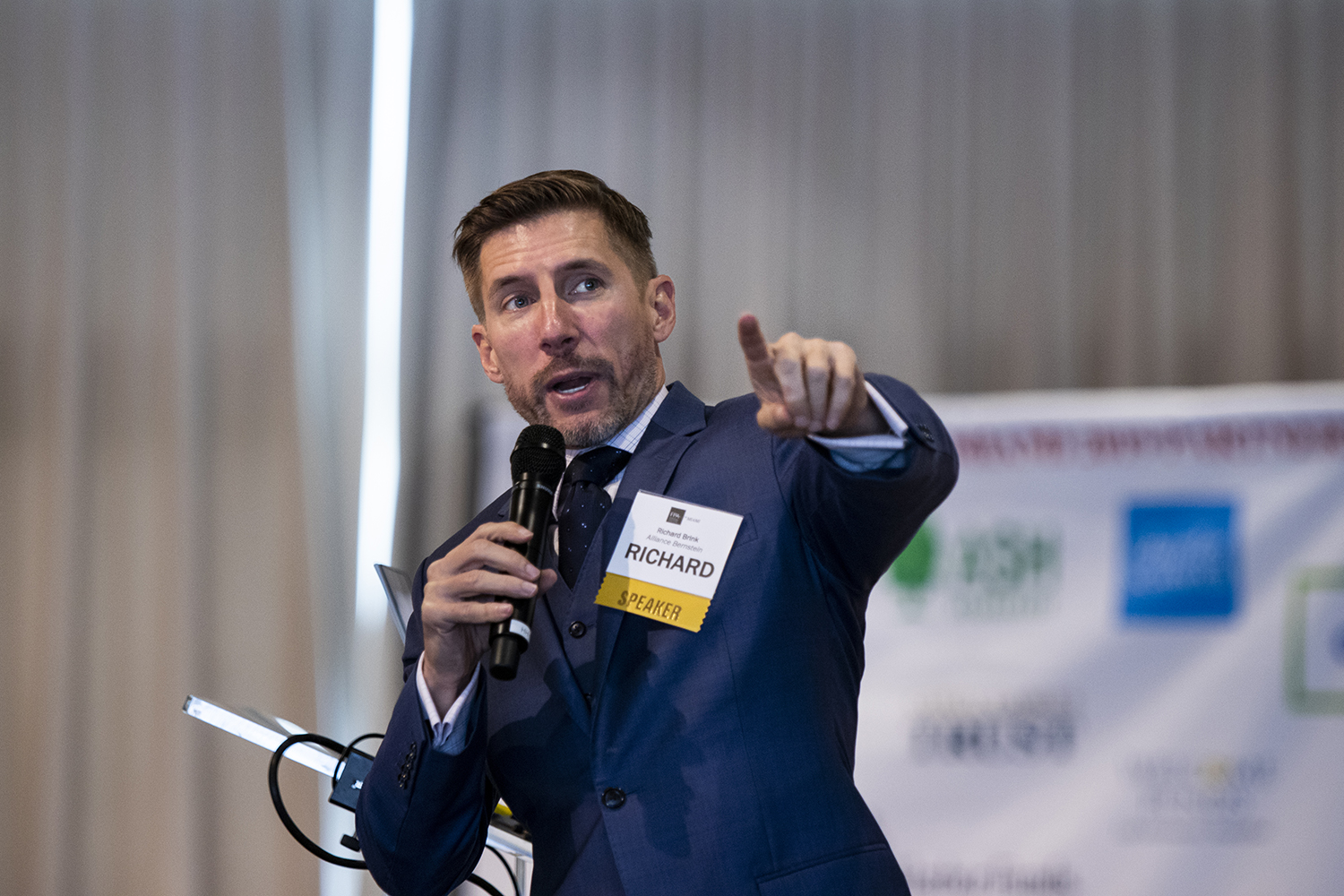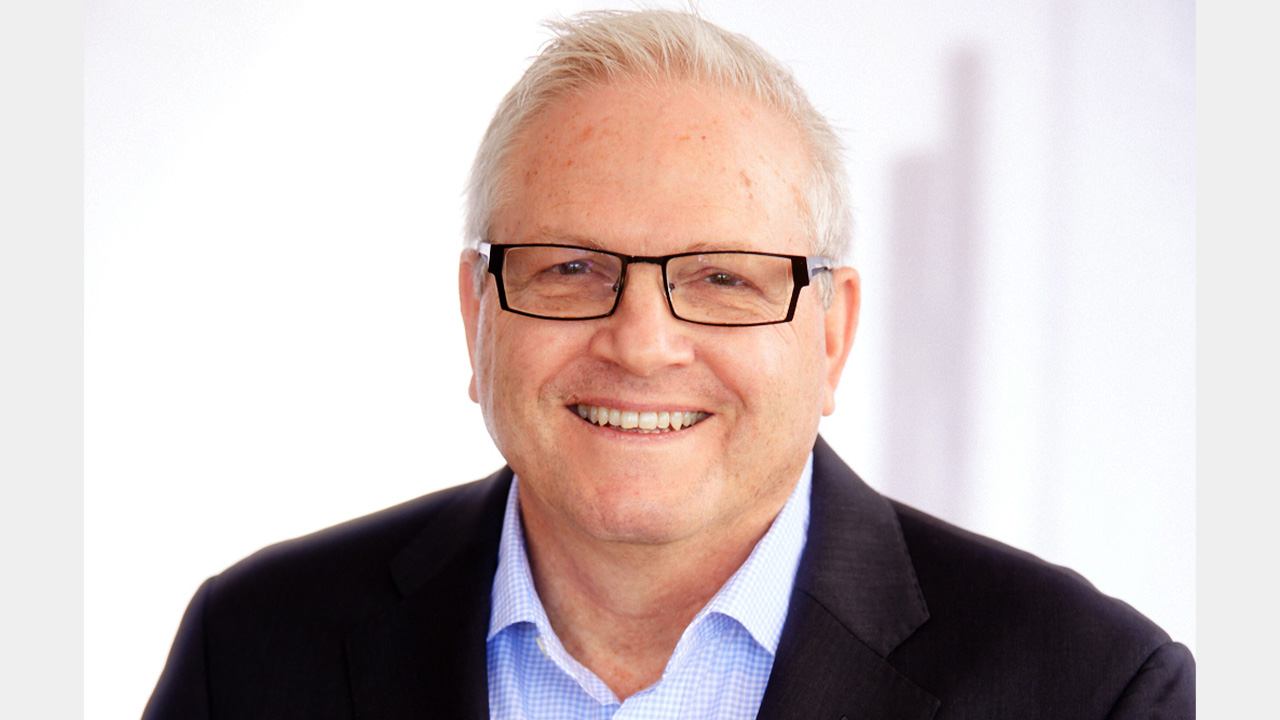[vc_row css_animation=”” row_type=”row” use_row_as_full_screen_section=”no” type=”full_width” angled_section=”no” text_align=”left” background_image_as_pattern=”without_pattern”][vc_column width=”2/3″][vc_column_text]
Photos by Bethely Cameron
An outlook for lower stock market returns, how to use index funds and taking advantage of Roth IRAs were some of the topics presented at the 14th annual Financial Planning Association Symposium on Nov. 21 at the Rusty Pelican in Key Biscayne.
Here are some of the highlights from three speakers.
Build a Better Path: Making Investment Choices in a New Market Landscape
Richard Brink, a chartered financial analyst and senior vice president and market strategist AllianceBernstein, said there’s a new world order in investing and portfolios.
“What we have experienced over the past four decades is radically different than what’s ahead,” he said. “This is the late, late cycle,” with more risk ahead as many baby boomers retire.
To appreciate where we are now, Brink went back to the early 1980s. The Fed Funds rate was in the upper teens at times. The oldest boomers were turning 35 and entering their peak earnings year. There was also a large increase of women in the workforce. The ensuing lower interest rates and demographic changes helped fuel two decades of growth in stocks and real estate despite the dot-com bubble bursting and the Great Recession. Globalization and digitalization were also factors.
With interest rate yields so low, investors bid up equities with the Standard & Poors 500 going from close to 600 to above 3,000 over 20 years. Companies benefitted by refinancing debt, which flowed through to earnings. Low interest rates also fueled business refinancing, which flowed through to earnings. Corporate share buybacks have abounded, sometimes with borrowed money.
Since 1981, stocks have average 17.2 percent returns while bonds have returned 10.4 percent.
Now, though, financial gravity, with its 2 percent real growth in gross domestic product, and 2 percent inflation are making Brink expect the S&P will rise about 6 percent in 2020.
“I believe that what we’ve experienced over the last four decades is radically different than what we’re going to see over at least the next 10 to 15 years,” he said. “And the net-net is much more moderate returns with much greater downside risk for a very long time.”
Unfortunately, it comes as all those boomers are retiring and their retirement plans could be ripped apart if we get a downturn like 2008.
The new strategy should contemplate limiting downside risk, which he calls Up Down Capture Investing. Basically, it means you might not make as much when markets are going up, but you’ll lose less when it drops.
One strategy could be investing in lower volatility stocks in the S&P 500 instead of just the S&P 500 itself. Another strategy could be re-evaluating the role of high-yield bonds, which are often seen as too risky. Brink calls them “equities’ little brother” and says they have a higher correlation to stocks than they do Treasuries. High-yield goes up in value at about half the rate of equities, but they only go down about a quarter of the rate of equities. They also recover more quickly after a downturn, he has found. Global equities are also worth a look along with global bond funds hedged in U.S. dollars.
Those expecting high interest rates might be disappointed. Brink expects interest rates will stay low globally for a very long time.
Advanced Roth Planning; How to Squeeze More Juice Out of the Tax Lemon
Jeffrey Levin, director of adviser education at Kitces.com (Michael Kitces’ education site for financial planners), talked about some benefits of using Roth IRAs. For starters, Roths are funded after taxes, compared to traditional IRAs, which are funded before taxes. Roths offer tax-free distributions during retirement while IRA distributions are taxed.
One benefit of Roth’s is the lack of lifetime required distributions, unlike traditional IRAs, he said. (Nonspouse Roth beneficiaries do have required minimum distributions.)
Anyone with an eligible IRA account can convert, and there are no limits on minimum or maximum income or minimum or maximum age.
One reason to consider converting to a Roth now are low tax rates. That could be a hedge if the tax rate rises.
He said other conversion candidates include:
• Clients with net operating losses.
• Clients with unusually low income/high deductions in a particular year, such as spending $40,000 on health care or giving a lot to charity
• Young clients at the start of their careers
Levin also outline the “Tax Torpedo.” Just $1 too much of non-Social Security income can push adjusted gross income into a higher bracket. Having a Roth compared to a traditional IRA could help alleviate that.
There’s also the “Widow’s Penalty,” where joint filers have to start filing as single, which hurts their tax brackets.
The Education of an Index Investor
Rick Ferri, a chartered financial analyst and the founder of Rick Ferri LLC, said investors need to have a philosophy, a strategy and the discipline of staying the course.
New investors start in darkness and typically don’t know the difference between an exchange traded fund and a mutual fund, he said. Eventually they might compare their portfolio’s performance with benchmarks and wonder about shortfalls. They might start learning about index funds and find out that 80 percent of index funds outperform actively managed money, he said.
Then, investors learn why index funds outperform: They have low or no fees. They might fire their adviser, he said, but then investors get lost in the complexity of searching for the perfect portfolio of index funds. They may keep adding on until “you’ve got a hodge podge of stuff and you don’t know what you got,” he said.
So, then, it’s back to managers who ask simplistic questions and say they will construct the perfect portfolio, which Ferri likened to “the cow flying over the moon.”
To help out, Ferri developed six Core-4 portfolios (shown at core-4.com), which use index funds and are broken into subtypes, depending on an investor’s risk tolerance.
For example, the low-risk “Classic Core-4” has an 80 percent allocation to a U.S. investment-grade bond index fund, 12 percent to a total U.S. market index fund, 2 percent to a U.S. real estate index fund and 6 percent to an international stock index fund. The aggressive “Classic Core-4” has 20 percent in bonds, 48 percent in the U.S. stock index, 8 percent in the real estate index and 24 percent in international stock index.
There are variations on the Core-4, such as one that emphasizes income and others that include global markets or are socially conscious.
Ferri still sees a role for advisers. They can help investors develop a written investment policy and strategies for when circumstances change. As behavioral coaches, they can provide discipline and experience to investors who need it.
Indeed, Ferri Investment Solutions offers advice for an hourly rate. ↵
[/vc_column_text][/vc_column][vc_column width=”1/3″][vc_single_image image=”38396″ img_size=”full” add_caption=”yes” qode_css_animation=””][vc_single_image image=”38395″ img_size=”full” add_caption=”yes” qode_css_animation=””][vc_single_image image=”38394″ img_size=”full” add_caption=”yes” qode_css_animation=””][/vc_column][/vc_row]














